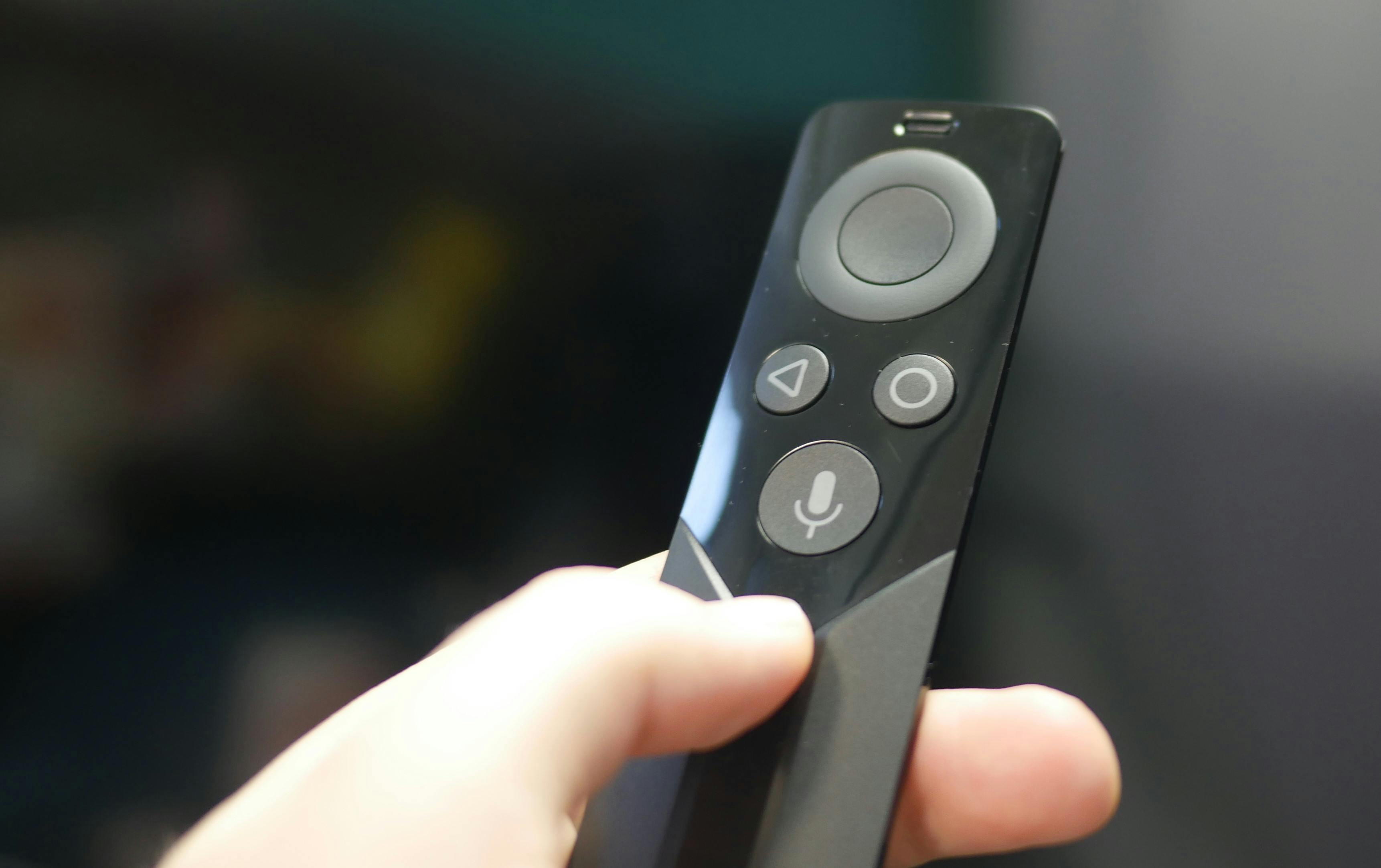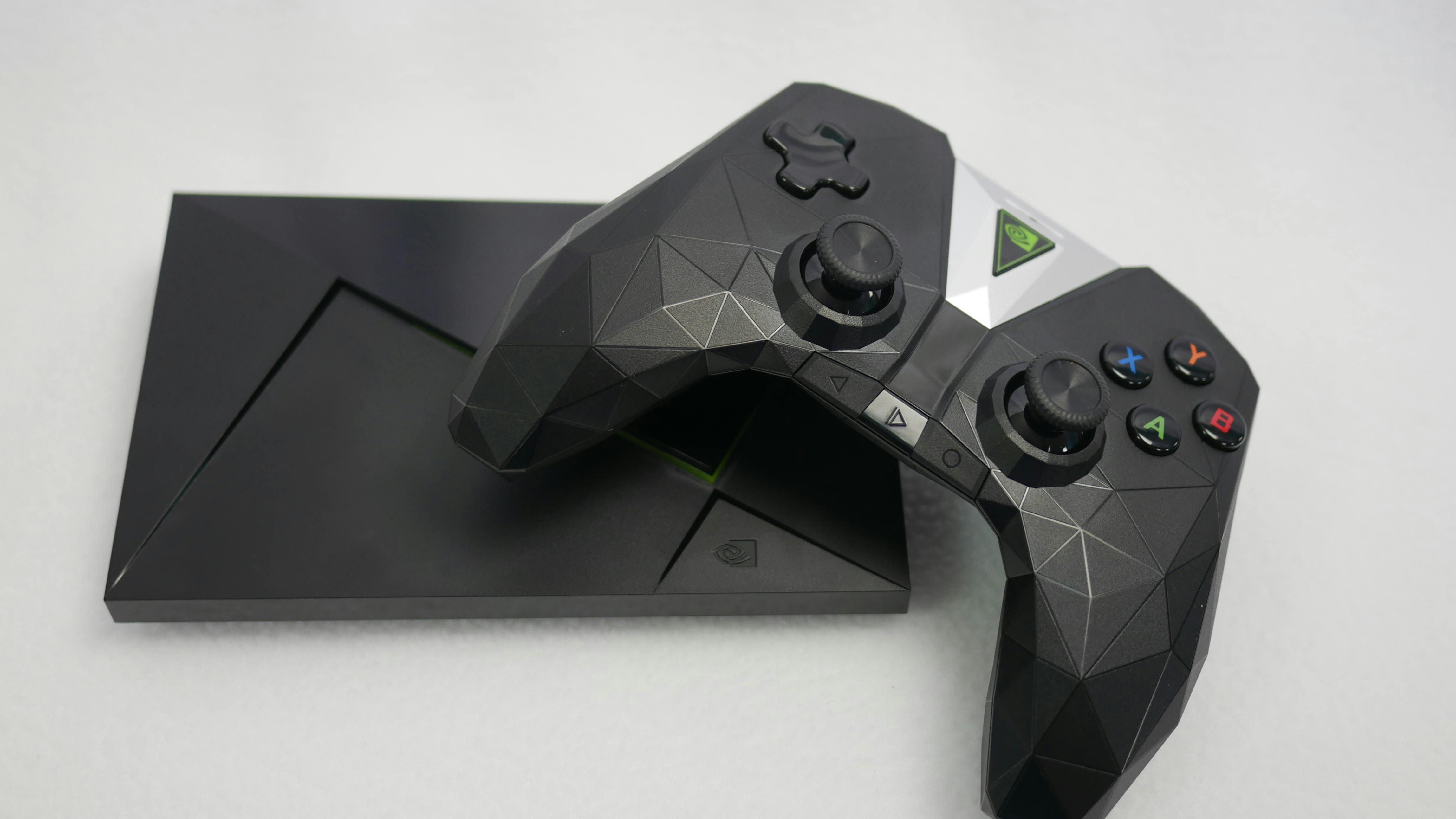The Nvidia Shield TV is an Android-powered set-top box that merges the capabilities of an Apple TV with the power of a gaming console. The tiny box comes equipped with everything you’d expect from a high-end streamer, including 4K HDR compatibility, an Ethernet port, and headphone jack for private listening.
But it’s the Shield TV’s in-house Tegra X1 SoC that puts it in uncharted territory and makes it an enticing entertainment hub for those who switch between gaming and streaming movies or TV shows.
This year’s version is an all-around improvement over the previous model. But is it worth the steep price tag?
Design
The first thing you’ll notice when unpacking the Nvidia Shield TV is it’s surprisingly small footprint. The graphics card developer was able to fit the exact same internals of last year’s set-top box in a frame that is 40 percent smaller.
The two-tone matte and glossy black color scheme is something you’ve seen all too much lately, with both the Xbox One and PlayStation 4 sporting a similar can’t-make-up-our-mind look. The Shield TV pulls it off better, and its sharp design signature accented by a glowing green light is pleasantly futuristic.
On the back you’ll find two USB 3.0 ports for connecting to external devices, an Ethernet port, and HDMI input.
Accessories and controller
The remote looks very similar to the old Apple TV remote (ugh, more two-tone black). In fact, it has the exact same layout except for the addition of a Google voice-command button.
Those two matte strips on the lower left and right side of the remote are actually touch-sensitive and control your TV’s volume. I found the implementation a bit finicky and would have preferred a more traditional layout.
The controller is a complete redesign from the one included in last year’s model; it now includes haptic feedback and 60 hours of battery life. This time around, Nvidia took the sharp angles of its set-top box and went on a copy-and-paste frenzy, creating a controller that not only looks better but actually feels like one from a console.
It still doesn’t hold up to the standards of Xbox’s updated controller, or the excellent DualShock 4, but it gets the job done to a point where I couldn’t make excuses every time I died playing Just Cause 2.
Streaming
Let’s get this out of the way: The Nvidia Shield TV has all the major streaming apps most people are looking for, including Netflix, Amazon, YouTube, and a host of Google offerings. It is capable of streaming those apps in 4K HDR, and its high-resolution interface is streamlined to help you quickly get to whatever it is you’re looking for.
The few apps that are missing, notably—NBC, USA Now, ABC News, CNBC, NBC Sports, Amazon Music, Rhapsody—can be cast to your TV with the Shield’s built-in Chromecast. It’s not a perfect solution, and more and more TVs already come with this feature, but it’s a welcome addition nonetheless.
There isn’t much to be said about the streaming experience, except that everything worked as I’d hoped. Streaming Netflix and Amazon Video was seamless, downloading new apps was exceptionally fast, and 4K content was as crisp as ever.
Gaming
The gaming experience is really where the Shield TV stands out.
There are three places to look for titles: the Google Play Store, GeForce Now, and GameStream.
Google Play Store: includes all the gaming apps you’d expect from Android but with the addition of Shield specific titles like Borderlands: The Prequel, The Witness, and Final Fantasy IX, among others.
GeForce Now: requires either an $8 subscription or the individual purchase of games. Most of the titles available for streaming are a few years old, but newer titles are added every day. Some of those included No Man’s Sky and Lego Star Wars: The Force Awakens.
GameStream: lets you stream your PC games onto a TV as long as they are running on a compatible Nvidia-powered PC.
That may sound overwhelming, but all of your games can be quickly accessed from the consolidated Shield Games app.
The Shield TV uses the same Tegra X1 CPU/GPU found in the upcoming Nintendo Switch, which means it won’t rival the PS4 or Xbox One in terms of raw power, but it’s easily the most powerful set-top box out there.
Our gaming experience on the Shield TV ranged from extremely satisfying to painfully frustrating. I was smitten by how fast you can start up a game from GeForce Now. That’s because games aren’t downloaded but streamed straight from an Nvidia server.
Unfortunately, I ran into a number of frame-rate issues that occasionally forced us to put down the controller. Sure, the majority of our time playing was smooth sailing, but I’ve come to appreciate single-player gaming as a safe haven from lag, especially when hardwired to a router.
Should you buy it?
The new Nvidia Shield TV is an impressive machine, and a welcome upgrade from last year’s model, but I’m still finding it hard to argue its value. The 16GB version costs $100 more than a comparable streamer in the Roku Premiere+, and the same as an Xbox One. You’d have to spend $300 (the price of the 500GB Shield Pro) to buy both of those, but you’d end up with a more comprehensive streaming experience, and a full-blown gaming rig.
That puts the Nvidia Shield TV in a strange middle ground between set-top box and gaming console. In the end, the main problem with the device isn’t its $200 price tag or even the inconsistent gaming performance I encountered during testing. It’s that I’m not convinced that middle ground should exist.
Get it now: Nvidia Shield TV and Nvidia Shield TV Pro











